Food blogger’s confession: When I traveled in India recently, I ate only three foods: dal (lentils), rice and puri bread.
Don’t judge me, you Adventurous Street Food Eaters: I was scared of developing Delhi Belly. I didn’t want to take ill and miss out on a single minute of blogging for Ashoka’s Young Champions…

Walking awestruck around the Taj Mahal…

Or daydreaming in monsoon palaces…

Indian home-cooking: No such thing as “plain old” dal.
And here’s the truth: I didn’t feel even a little deprived on my dal diet. While I ate lentils two and sometimes three times a day, they were always delicious and different. No Indian cook’s dal is like another. And every lentil dish I ate was truly fabulous.
So fabulous that, when I came home, I prepared dal at least once a week. With an abundance of microbe-free ingredients available, you’d think I would’ve dived into Rajasthani recipes with a vengeance, right? But you’d think wrong.
Aside from dal and American-style curries—typically, stews with a spoonful of ground curry powder tossed in—I’ve cooked pathetically few Indian dishes.
Why I haven’t ventured forth on India’s spice trails.
India’s culinary complexity intimidates me. Food is combined in Ayurvedic combinations. Dishes have almost sacred regional traditions. And then there are the spices: Used whole or freshly ground. Applied in seemingly coded combos. Fried separately to full, aromatic bloom. Simmered and layered for complex, phantasmagoric flavor.
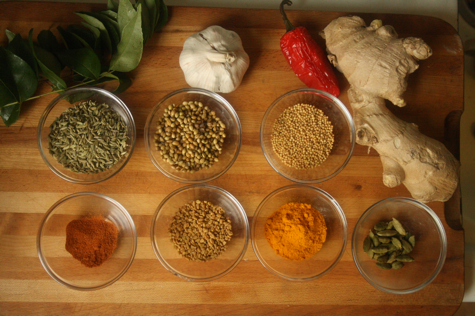
Take this Kerala-Style Coconut Fish Curry, adapted from a Food and Wine recipe. Of the dish’s twelve roots and herbs, ten are whole. You start the recipe by frying a spoonful of tiny mustard seeds and handful of fresh curry leaves—Westchester, New York cooks will find them at Bhavik Grocery in Elmsford. When the mustard balls pop and turn golden brown, you spoon in an intensely flavored paste of grated coconut, coconut milk, ginger root, garlic and Serrano pepper. As you gently fry the paste, the flavors condense and intensify.
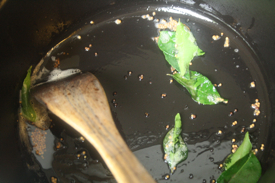

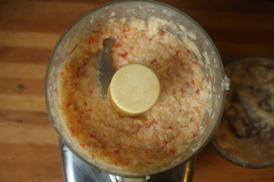
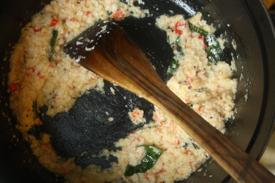
Next comes a third spice layer of fennel, coriander, cardamom, fenugreek and other whole—and a few ground—spices. This intoxicating mixture is cooked for a few more minutes until the spices release their full flavor. After adding more coconut milk and tomatoes and stewing for ten minutes, you—finally—add chunks of mild fish.
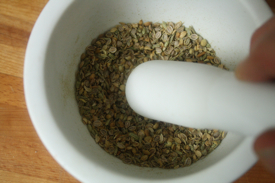
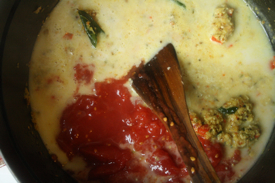
Almost an afterthought, the fish poaches in a scant 3 minutes.
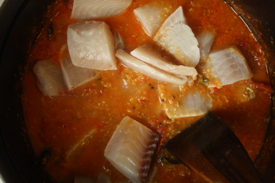
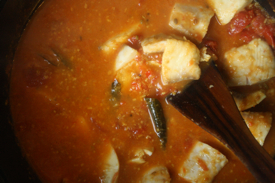
Chopped cilantro adds the final exclamation point to this heady, aromatic stew.
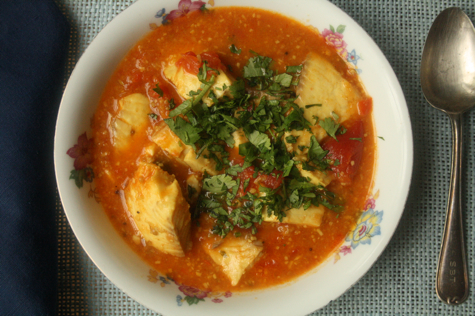
The distinct cooking layers—of herbs, aromatic roots, whole spices and coconut—deliver an explosion of flavor, texture and heat like nothing else you’ve ever eaten.
I need a cooking guru.
Here’s the thing: I’m a decent, if completely self-taught, scratch cook. I’m willing to attempt most recipes. But I think my autodidactic approach to cooking has met its match in Indian cuisine.
I adore this food—and want to cook it well. After 25+ years I may just have to break down and take a cooking class.
Food this fabulous deserves a guru.
New York City or Hudson Valley suggestions?
Kerala-Style Coconut Fish Curry
1/3 cup unsweetened shredded coconut
1 small onion, finely chopped
2 cloves garlic, crushed
1 Serrano chile, minced
2 tablespoons fresh ginger, peeled and chopped
1/3 cup plus 3/4 cup unsweetened coconut milk
2 tablespoons mild vegetable oil
1/2 teaspoon yellow mustard seeds
8 curry leaves, preferably fresh
2 teaspoons whole fennel
1 tablespoon whole coriander
1/4 teaspoon whole cardamom
1/4 teaspoon whole fenugreek
1/4 teaspoon turmeric powder
1/4 teaspoon cayenne pepper
1 cup water
4-5 (about 3/4 cup) canned Italian tomatoes, drained and chopped
½ teaspoon Demerara sugar
1 pound mild, skinless, filleted fish such as sole, talapia or salmon, cut into 1 1/4-inch chunks
Juice of one lemon
Salt
Fresh chopped cilantro
- Cut fish into chunks, sprinkle with salt and toss with lemon juice. Cover and set aside in fridge.
- In a mini food processor, combine the shredded coconut, onion, garlic, Serrano and ginger with the 1/3 cup coconut milk. Puree to a paste.
- In a Dutch oven, heat the oil. Add the mustard seeds and curry leaves. Cook over medium heat until the seeds pop, about 1 minute.
- Spoon in the coconut-ginger paste and cook over medium flame, stirring to reduce the paste’s juices and intensify flavor, for about 4 minutes.
- In the meantime, measure the fennel, coriander, cardamom and fenugreek into a mortar and pound with a pestle. You want to smash the spices to release their oils and flavors—you’re not aiming for pulverization. When spices are half-crushed, add them to the coconut paste, along with the turmeric and cayenne and cook, stirring, until paste is fragrant, about 2 minutes.
- Add the remaining 3/4 cup of coconut milk, water, tomatoes and sugar. Bring to a boil, lower flame and simmer for 10-15 minutes. Note: This curry can be prepared in advance up to this point and kept covered tightly in fridge for up to two days.
- Drain the fish chunks and add them to the sauce, stirring gently to coat the fish. Poach fish over medium-low flame, stirring gently occasionally, until fish is just cooked through, about 3 minutes.
- Remove fish to serving bowl and scatter chopped cilantro over the curry. Serve with a side of steamed basmati rice.
Serves 6.
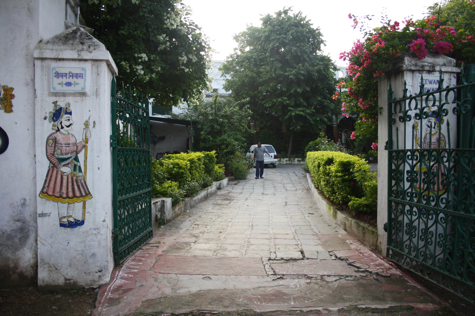




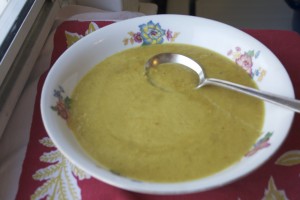
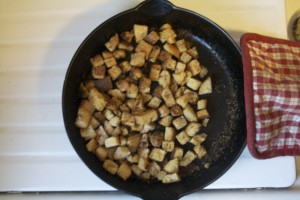

looks like you did a stella job on the fish curry to me, but I agree Indian cooking takes time and skill
Thanks Rebecca–a serious compliment coming from you. : >
As you’d expect, as I cook more and more Indian food, it gets easier and faster. I’ve really embraced the whole spices. Now that I’m stocked with almost all of them–and a mortar and pestle–it only takes a few more seconds to grind whole, rather than use pre-ground, spices. And the taste is simply not comparable.
This fish curry has gotten very easy to put together: When I made it Monday, I whipped up the sauce in the morning when the weather was cool, then stored it in the fridge. In the evening I reheated the sauce and popped in the fish. Dinner was ready in ten minutes.